"Money Supply: A Primer
You walk into a Merchant and a sign says, "All Items on Sale Today for Cash Only No Credit."
You are interested in purchasing an item. The Merchant, being a crafty sort asks "How much money do you have to spend(in US dollars)?"
How would you answer that if you are being truthful?
You might start by looking into your wallet and pockets, and counting all the cash and coins you have with you at that moment.
This is equivalent to the monetary base, or M0. It is money you have that is immediately available requiring no change or conversion. There is very little risk to the merchant, unless it happens to be counterfeit which is easily verified.
"Not enough" says the Merchant. "I am sorry, but do you have more?"
M1
Then you remember that in addition to cash, you have your checkbook with a current balance in it, and a debit card to an account you maintain in a local bank, but with no overdraft or lines of credit provisions.
That plus the currency in your pockets is M1. See the difference? You do not have ALL your money in your pockets for immediate presentation, but with a little transactional effort the money is readily available and it is inherently your money, it belongs to you. It is just being held elsewhere besides your pockets and wallet. The merchant assumes a little more risk, but he can quickly call your bank to verify that the funds are available for the check, and the debit card is even more mechanized. More risk, a little more delay, but almost as 'good as cash.'
"I am sorry sir," says the Merchant, "but this is still not enough to exchange for such a valuable object as I have for sale here."
M2
You think about it, and remember that you have a savings account across the street at the bank, and a money market fund at your brokerage office next door, that have more of your money on deposit. You have no cards for those accounts, but it would be an easy thing to walk next door or across the street and obtain the cash.
This is M2. There is a more complex transaction involved, since the transfer is not electronic as in the case of a debit card, and you must leave the store to obtain the money in the form of currency unless they bring it over to you. But it is your money that is available to you on demand. There is a small amount of risk of your bank not being solvent when you need the money, but these are slight inconveniences compared to the safety of not carrying around large sums of money that earn no interest in the form of cash.
"I am so sorry," says the Merchant. "But this item is far too valuable to part with for such a sum as you have offered."
M3
You think about it, and remember that you have a large Certificate of Deposit at the bank across the street that matures in one year. There is a small penalty if you redeem it today to receive your money since you promised it to them for a time in exchange for a specific return, and you must fill out some paperwork, but it is still your money. It involves no sale of an asset or conversion.
That is M3. It involves money that is still yours without borrowing, but has additional conditions set up on it for its retrieval.
MZM
If one takes all the things we describe as M2, but takes out the time deposits or certificates of deposit, and includes ALL money market funds, that is what the Fed considers to be the broadest measure of liquid money, or Money of Zero Maturity (MZM). "Zero maturity" means that the money is not tied up for a period of time to mature to its full value.
Are credit cards or loans Money? No,those are all forms of borrowing something that is not yours that you promise to return with conditions. You are receiving money that was not yours.
Credit Is Not Money.
Credit, or debt, is the 'potential' for money, a way of receiving it.
Whether water is held in a canteen, a well, a cistern, or a private lake, it is still water and it is yours if you own it. So too money is still money if it is yours, no matter under what conditions you hold it or save it for your use.
The cloud of credit, or debt depending on your perspective, is the potential for money as it is defined in our economy. It is a source of money. At a given point in time, you either have the money as your property or you do not. But the source is not the money itself, and the source can be different and can change over time. In our society borrowing is so common and so technologically convenient that there is little difference in most people's mind between credit and money.
But the source is not the money itself, and the source can be different and can change over time. In our society borrowing is so common and so technologically convenient that there is little difference in most people's mind between credit and money.
But the difference is that if you spend real money, you incur no obligation for it in the future. You receive no payment request from another at the end of the month.
That is what money is, at least in our economy, and the various measure of money as it is held and shifts through the economy and a variety of transactions, where it flows and rest in pools, and moves again. A measure of the money supply is a snapshot in time.
How money increases or decreases, and how it is stored or held, is a significant indicator of economic activity for those who study such things. It is also significantly affected by custom, technology, and the prevailing mood and perception of the public.
The best and broadest measures of money supply are either MZM, or M2, now that M3 is no longer being reported by the Fed. This can easily be seen from the illustrations.
As springs feed into brooks, and brooks streams, and streams into rivers, and rivers into lakes, so the money supply components change in size and shape over time as money flows from its various sources. The speed of the flow is the 'velocity of money' and as one can easily understand that flow will have a different force and speed depending on when you measure it, and whether you are measuring one of the streams or a major river.
Money is the instrument of the official economy. This gives money a certain arbitrariness over time because, after all, it is the product of a committee. Official money is the creation of government, managed by its agents, validated by the people who use it.
Official money rises and falls from favor to disfavor, as do governments. What if you were a citizen of Zimbabwe? Or the US in the 1860's? Or Germany in 1922? How would you feel about your official money then? Why is it different for you now? What would change your opinion?
What is the 'natural growth rate' of the money supply? Zero?
The discussion of how money supply increases, and who or what determines the supply, and what an appropriate level of growth would be is a matter for discussion on another day. So too is the strange phenomenon of 'natural forms of money' that keep turning up in every era and nearly every society.But for now at least you have the means to understand what money supply is and how it is measured, and how it is different from potential money, or credit, the representations of money, and asset stores of wealth."
Now David Friedman, with a good resource post:
"The Price of Money and Other Errors
It is common for people who think they understand economics to describe the interest rate as the price of money. If it were true, then printing more money would lead to lower interest rates, and many of the same people think it does.
The next time someone tells you that the interest rate is the price of money, ask him what he thinks a reasonable interest rate is and offer to buy some money from him—at ten cents on the dollar if the rate he suggests is ten percent. As that example illustrates, the interest rate is not the price of money. The price of money is what you must give up to get it. If apples cost fifty cents each, the price of money is two apples. More generally, the price of money is the inverse of the price level—when prices are high, that means that money is not worth very much.
The interest rate is the rent of money measured in money. Suppose you borrow a hundred dollars at ten percent. If the price of a dollar is two apples, you are borrowing the price of two hundred apples and paying the price of twenty apples a year in interest. If the money supply doubles, prices double, including the price of an apple, you are borrowing the price of a hundred apples and paying the price of ten apples a year in interest. If you prefer, you could do the same real transaction as before by borrowing two hundred dollars and paying twenty dollars a year interest, still at ten percent.
As this example suggests, there is no connection between the amount of money in circulation and the interest rate. There is a connection between the rate of change of the amount of money in circulation and the interest rate, but it goes in the opposite of the direction implied by the error I am discussing. When the money supply is increasing and prices are rising, nominal interest rates are high, not low, because lenders must be compensated for the fact that they will be paid back in dollars worth less than the ones they lent.
Much of the confusion here comes from the multiple meanings of the term "money." When we say someone has lots of money, we don't usually mean that he has a lot of green paper or a large balance in his checking account; we mean that he is wealthy. His wealth might be in money, it might be in valuable real estate, it might be in stocks and bonds. If there is lots of money in that sense—more precisely, if lots of people have wealth they would like to lend out—that will tend to lower interest rates. But that has nothing to do with the amount of money in circulation.
What brings up this particular confusion at the moment is the attempt to link the current crisis with the events that led to the Great Depression. Those events produced a sharp drop in the money supply, due to banks going broke and depositors either losing or withdrawing their deposits. Given the nature of a fractional reserve system, replacing a mix of currency and deposits with just currency reduces the total amount of money in circulation, in that case by a lot. The problem could have been prevented if the Federal Reserve System had kept those banks from failing, which was part of the purpose it had been set up for, a purpose that had been served earlier by the private arrangements among banks that it effectively replaced( A GOOD POINT ).
That series of events cannot happen now because the FDIC insures bank deposits( TRUE ). What we are observing is not a drop in the money supply. It is a loss of wealth, as firms discover that their assets, in particular mortgages and securities backed by mortgages, are worth less than they thought. That explains why the proposed bailout is enormously greater than would be required to prevent a run on bank deposits( TRUE. BUT NOT A CALLING RUN. ). $700 billion is roughly half the total money supply of the U.S. (M1—currency plus checking accounts and similar assets)--and about half of that is currency, which isn't going to vanish whatever happens to the banks. The total wealth of the economy is enormously greater than the total amount of money in the economy, and the bailout is a response not to a reduction in the amount of money but a reduction in the amount of wealth.
That also explains why the bailout has very little to do with preventing another Great Depression. The U.S. money supply at the moment is at or near its all time high, and it is hard to see how anything likely to happen, with or without a bailout, will reduce it by much. The mechanism that set off the Great Depression isn't happening.( I AGREE )
What is happening is the failure of lots of firms. The failure of a firm doesn't wipe out wealth, except to the extent that the firm itself—its firm culture, web of relationships and such—has some value. When a firm fails, that is at least some evidence that that value was negative, which is why nobody chose to buy out the firm and keep it going. The ordinary assets of the firm—its buildings, land, stocks, bonds, mortgages, and whatever it owns—don't vanish when the firm fails, they get sold to someone else.
The bailout is not a way of preventing the loss of value. The loss (or transfer) of value occurred when people made bad mortgage loans( TRUE ). What happened more recently was the recognition of that loss. All the bailout can do is to shift( SOME OF THE ) the loss from some people to others, from the stockholders and creditors of firms that are now effectively bankrupt( THESE BUSINESSES I AGREE ) to the taxpayers( I AGREE ).
All of which comes back to confusion over the meaning of "money."
Now, Bob McTeer:
"Is the Fed Printing Too Much Money?
I've always assumed that those who use that terminology understood that "printing money" shouldn't be taken literally. Nowadays, I'm not so sure. Several financial talking heads I've heard recently sound like they mean it literally. Often the context has been whether the Fed might buy longer-term treasuries.
While most of you know this, I feel compelled to point out that the Fed doesn't literally print money. That is done by the Bureau of Engraving and Printing, which is under the Treasury Department. The amount of printed or paper money that gets into circulation is not determined by the Bureau, the Treasury, or the Fed. It is determined by the preference of the public for holding currency as opposed to deposit accounts in financial institution.
If the public collectively decides it wants to hold more of their money in the form of currency-as they normally do as the Christmas season approaches-they simply cash more checks at their banks and take the currency. The proportion of the money supply (however we define it) held in paper money rises relative to the proportion held as deposits. More checks cashed at banks are paid for by the public with deposit balances. The banks will, in turn, order more currency from the Federal Reserve, paying for it by drawing down their reserve balances on deposit at the Fed. When the Fed's own inventory of currency gets low, it orders more from the Bureau of Engraving and Printing and pays for it by increasing Treasury deposits at the Fed. So the amount of currency printed is up to the public.
I should mention that when paper money gets too worn or damaged, the Fed destroys it and replaces it with new inventory from the Bureau. That means there is a relatively steady printing of new currency even when the total money supply-currency plus certain deposits-isn't growing rapidly.
The Fed influences the creation of money while the public determines the portion to be held in currency. Substituting "creating money" for "printing money" would correct many assertions that are made. However, the term "creating money" may also be misunderstood by those who aren't familiar with the process.
The Fed normally "creates money" by buying short-term government securities in the open market. The seller of the government securities gives up the securities and gets more deposits in his bank. He traded one asset for another. The banks owe more deposit liabilities to their customers, offset by more reserve deposits at the Fed-when it deposited the check received from its customer. The Fed has more government securities on the asset side of its balance sheet offset by more reserve liabilities owed to the banks. Everybody's balance sheet balances. New money was created in the process, but no net new assets or wealth. New money was created-not printed. If its growing deposits (money supply) causes the public to rebalance into more currency, more money might then be "printed," but it will be paid for with deposit money."
All three of these posts provide clear explanations and should be kept.
The question of whether the Fed is creating too much money these days is a different question to be dealt with separately."





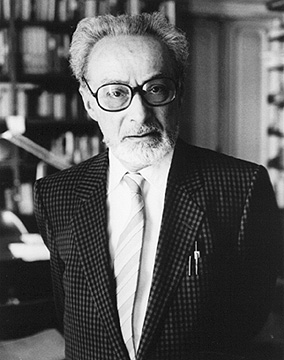


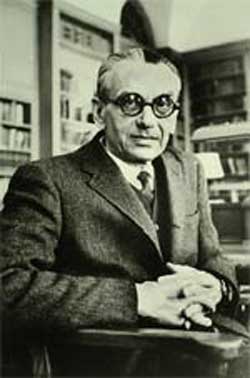

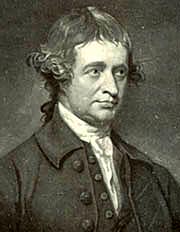























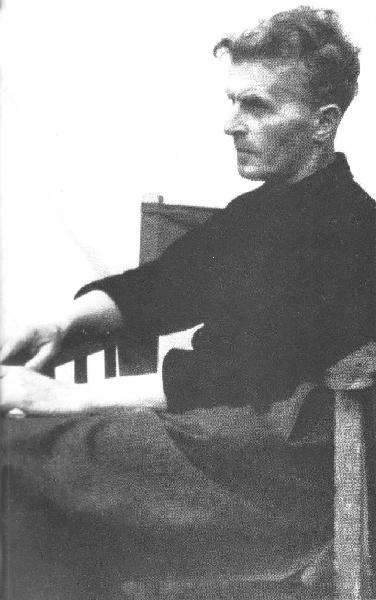

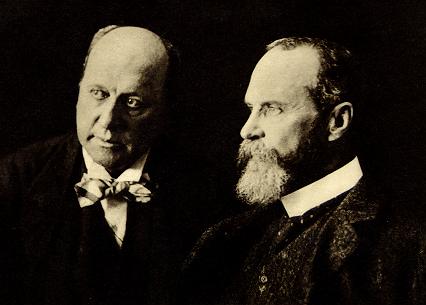


No comments:
Post a Comment